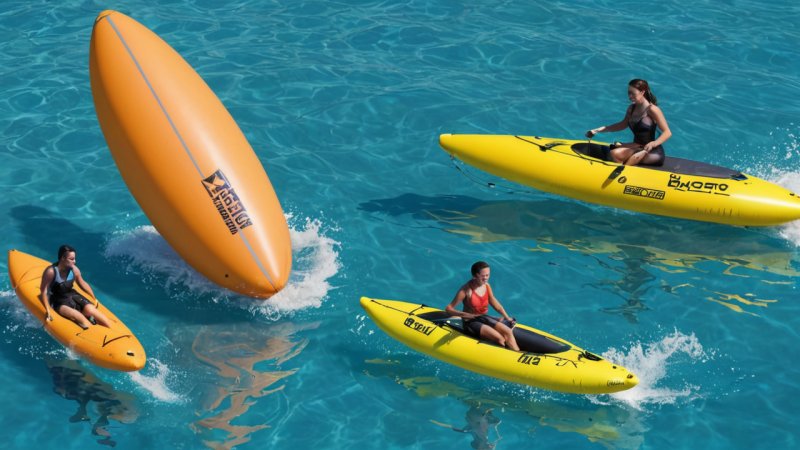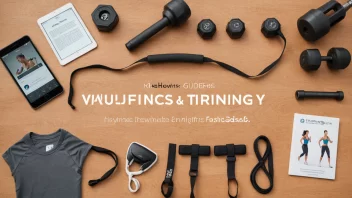When it comes to safety in water sports, choosing the right buoy can make all the difference. Buoys serve as essential safety equipment, providing visibility, flotation, and guidance for both athletes and rescuers. However, with various types of buoys available—each designed for specific activities and conditions—it can be challenging to determine which one best suits your needs. This article will compare two popular types of buoys: inflatable buoys and rigid buoys, exploring their pros, cons, and ideal use cases.
Understanding Inflatable Buoys
Inflatable buoys, as the name suggests, are hollow structures that can be inflated with air. They are widely used in various water sports, including swimming, kayaking, and paddleboarding. Inflatable buoys come in different shapes and sizes, often featuring bright colors for high visibility.
Pros of Inflatable Buoys
- Lightweight: Inflatable buoys are easy to transport and carry, making them ideal for those who frequently travel to different locations.
- Storage: When deflated, they take up minimal space, allowing for convenient storage.
- Versatile Use: These buoys can be used in multiple water sports and environments, from calm lakes to oceanic settings.
- High Visibility: Their bright colors and large surface area make them easy to spot from a distance.
Cons of Inflatable Buoys
- Puncture Risk: Inflatable buoys can be prone to puncturing, which may compromise their effectiveness.
- Inflation Required: They require time to inflate, which may not be ideal in emergency situations.
- Stability: Inflatable buoys may not be as stable as rigid options, particularly in rough water conditions.
Exploring Rigid Buoys
Rigid buoys, typically made from solid materials like plastic or fiberglass, are commonly used in water sports for both safety and navigational purposes. These buoys are often seen in competitive environments, such as triathlons and sailing competitions.
Pros of Rigid Buoys
- Durability: Made from tough materials, rigid buoys are resistant to punctures and can withstand harsh conditions.
- Stability: They offer greater stability in rough waters, making them a reliable option for safety.
- Immediate Use: Rigid buoys are ready for use without the need for inflation, which can be crucial in emergencies.
- Long Lifespan: Their solid construction ensures they last longer compared to inflatable options.
Cons of Rigid Buoys
- Weight: Rigid buoys are often heavier and more cumbersome to transport than inflatable buoys.
- Storage: They take up more space, which can be a disadvantage for those with limited storage options.
- Cost: Rigid buoys can be more expensive due to their durability and construction.
Comparative Analysis
Choosing between inflatable and rigid buoys ultimately depends on the specific needs of the water sport, the environment, and the athlete's preferences. Below are key comparison points to consider:
Portability
Inflatable buoys are the clear winner when it comes to portability. Their lightweight and deflatable nature allows athletes to carry them easily. In contrast, rigid buoys are heavier and may require more effort to transport, especially over long distances.
Durability and Stability
Rigid buoys excel in terms of durability and stability. They are less likely to be damaged and provide a stable presence in rough waters. Inflatable buoys, while versatile, can be punctured and may not perform as well in challenging conditions.
Ease of Use
Rigid buoys are ready for immediate use, which can be crucial in emergency scenarios. On the other hand, inflatable buoys require time for inflation, making them less practical when time is of the essence.
Cost
Inflatable buoys are typically more budget-friendly than rigid options. However, considering the long-term investment, rigid buoys might offer better value due to their durability and lifespan.
Conclusion
In conclusion, both inflatable and rigid buoys have their unique advantages and disadvantages, and the choice ultimately hinges on the specific needs of the athlete and the water sport involved. For those prioritizing portability and versatility, inflatable buoys are an excellent choice. Conversely, athletes seeking durability and stability in challenging conditions may find rigid buoys to be the better option. Evaluating your individual requirements, water sport type, and environmental factors will guide you towards making the best decision for safety and performance on the water.






